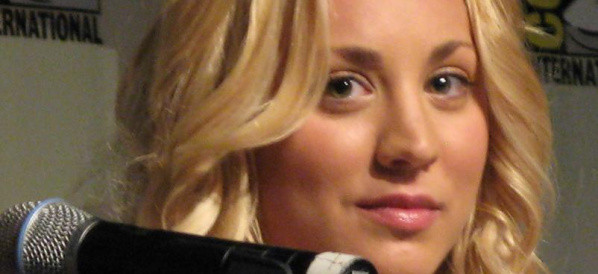 0 Terms
0 TermsHome > Terms > English (EN) > penguins
penguins
One of the most distinctive of all bird orders, excellently adapted to life in water, are the penguins (Sphenisciforms), comprising the one single family, Spheniscidae. The body is streamlined, the head elongated, and the stout beak ends in a sharp point. The thick, close-packed feathers, smooth and well-oiled, serve not only as an insulating layer but also to lessen the friction caused by the bird's passage though the water. The short, powerful flippers have long lost the power of flight and are used as paddles; in some species they make up to 120 strokes a minute. The webbed feet act as rubbers.
Penguins attain great speeds under water to catch the fish they feed on. When coming out of the water, e.g. on to an ice floe, the penguin often pops up like a cork, jumping to a height of up to 6 feet. Movement on land is clumsy and the penguin combines shuffling along on its feet with propelling itself over the surface on its belly, attaining a pretty fast pace in this manner. The feet, place well aft, with four toes connected by a web, are comparatively small. Penguins spend the greater part of their lives in the water, emerging only during the breeding period when they converge in dense colonies on dry land or shore ice. The birds moult during the nesting season, either at the beginning or the end. In penguins this process is remarkable because the plumage is shed in bulk instead of gradually, and it takes from 10 to 24 days to grow out. During this time the bird cannot enter the water and so cannot obtain food. Small species of penguins lay two eggs, large species only one. They either build a simple nest or else keep the egg warm in a fold of the belly, the egg resting on top of the feet.
The 15 species of penguins are to be found in certain regions of the Antarctic, on the islands of the Antarctic Seas, extending from Cape Horn to New Zealand, northwards approximately to the Tropic of Cancer. Only two species occur outside this range, one nesting on the western coast of South America, the other on the Galapagos Islands on the equator.
The emperor penguin, Aptenodytes forsteri, is about 4 ft long and weighs about 90 lb. It is bluish grey with a white breast and belly. The crown, nape, cheeks and chin are black and there is an orange spot on each side of the neck. It inhabits the waters of the Antarctic, extending northwards as far as South Orkney and Kerguelen, but nesting in winter only at certain spots on the shore ice of the coast of Antarctica. Its breeding cycle is of unusual interest. In early April, which is autumn in the Antarctic, the birds gather at their regular nesting grounds. The courtship and laying of the eggs takes place in the days of the severest frosts. After it is laid the egg is immediately taken charge of by the male, which places it on his fee and covers it with a fold of his belly skin, remaining in this vertical position throughout the 63 days of incubation period while the female heads for the sea to break her fast. At the end of this time the female returns to care for the young. When feeding, the chick puts its head into the parent's crop to get its meal. The juvenile plumage is thick and fine, the adult plumage being acquired after the moult in December.
The king penguin, Aptenodytes patagonicus, a close relative of the emperor penguin, has a similar life history. It is a smaller bird, with a black head with yellow-orange spots on each side. Its nesting grounds are on various islands off the coast of the Antarctic continent.
Belonging to the medium-size group is the adelie penguin, Pygoscelis adeliae, weighing about 13 lb and measuring 28 inches in length. The upper parts are blue-grey, the head black and the underparts white. It nests on the shores of Antarctica and adjacent islands, and also in the South Shetlands and South Orkneys. The birds arrive at their rocky nesting grounds in late October as the first heralds of spring. They build shallow nests of small pebbles set close together. The females begin laying eggs in November and incubation lasts about 35 days, so that the young hatch at the beginning of the Antarctic summer. The parents sit on the eggs in the normal manner of birds, as do most other penguin species. As a rule, there are two chicks to nest; their growth is rapid and they soon join their parents in the open water. These birds are unusually trusting creatures with something almost human in their behavior.
Various islands in the colder parts of the south temperate zone, including Tierra del Fuego and neighboring islands, the Falklands, Tristan da Cunha, Gough Island and some of the New Zealand group are the nesting grounds of the 2-ft tall rockhopper penguin, Eudyptes crestatus. This species has a golden-yellow streak above the eye terminating in a crest on either side of the crown. The nesting season is from August to December, and the nest is a small depression in the ground in which the female lays 1 or 2 eggs.
Often see in zoos is the jackass penguin, Spheniscus demersus, which inhabits the coast of South Africa and neighboring islands. It is 26 inches long and has a black band across the breast. Very similar but slight smaller is the humboldt penguin, Spheniscus humboldti, the only species found on the coast of Peru and north Chile. At one time it was an important source of guano.
Other Languages:
Member comments
Terms in the News
Billy Morgan
Sports; Snowboarding
The British snowboarder Billy Morgan has landed the sport’s first ever 1800 quadruple cork. The rider, who represented Great Britain in the 2014 Winter Olympics in Sochi, was in Livigno, Italy, when he achieved the man-oeuvre. It involves flipping four times, while body also spins with five complete rotations on a sideways or downward-facing axis. The trick ...
Marzieh Afkham
Broadcasting & receiving; News
Marzieh Afkham, who is the country’s first foreign ministry spokeswoman, will head a mission in east Asia, the state news agency reported. It is not clear to which country she will be posted as her appointment has yet to be announced officially. Afkham will only be the second female ambassador Iran has had. Under the last shah’s rule, Mehrangiz Dolatshahi, a ...
Weekly Packet
Language; Online services; Slang; Internet
Weekly Packet or "Paquete Semanal" as it is known in Cuba is a term used by Cubans to describe the information that is gathered from the internet outside of Cuba and saved onto hard drives to be transported into Cuba itself. Weekly Packets are then sold to Cuban's without internet access, allowing them to obtain information just days - and sometimes hours - after it ...
Asian Infrastructure Investment Bank (AIIB)
Banking; Investment banking
The Asian Infrastructure Investment Bank (AIIB) is an international financial institution established to address the need in Asia for infrastructure development. According to the Asian Development Bank, Asia needs $800 billion each year for roads, ports, power plants or other infrastructure projects before 2020. Originally proposed by China in 2013, a signing ...
Spartan
Online services; Internet
Spartan is the codename given to the new Microsoft Windows 10 browser that will replace Microsoft Windows Internet Explorer. The new browser will be built from the ground up and disregard any code from the IE platform. It has a new rendering engine that is built to be compatible with how the web is written today. The name Spartan is named after the ...
Featured Terms
Kaley Cuoco
Kaley Christine Cuoco - born November 30, 1985 - is an American film and television actress. She first came to attention for her role as Bridget ...
Contributor
Featured blossaries
Browers Terms By Category
- Investment banking(1768)
- Personal banking(1136)
- General banking(390)
- Mergers & acquisitions(316)
- Mortgage(171)
- Initial public offering(137)
Banking(4013) Terms
- Prevention & protection(6450)
- Fire fighting(286)
Fire safety(6736) Terms
- Ballroom(285)
- Belly dance(108)
- Cheerleading(101)
- Choreography(79)
- Historical dance(53)
- African-American(50)
Dance(760) Terms
- Printers(127)
- Fax machines(71)
- Copiers(48)
- Office supplies(22)
- Scanners(9)
- Projectors(3)
Office equipment(281) Terms
- Mapping science(4042)
- Soil science(1654)
- Physical oceanography(1561)
- Geology(1407)
- Seismology(488)
- Remote sensing(446)




